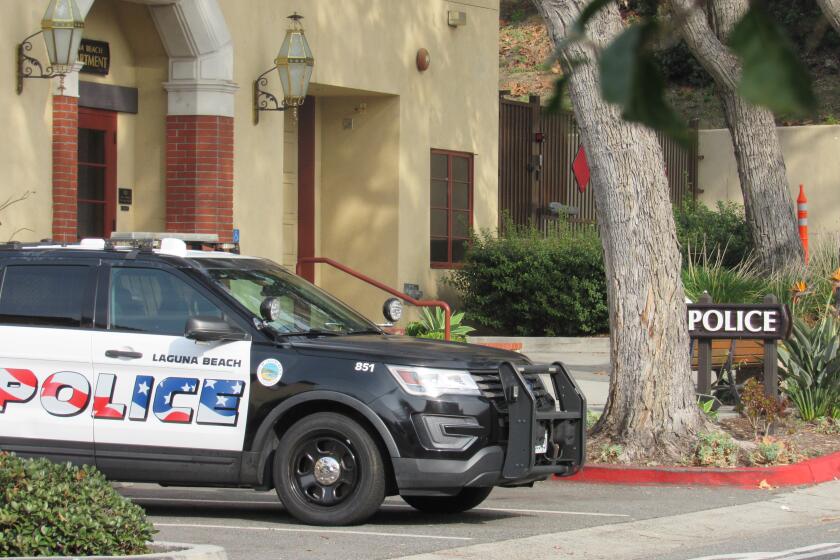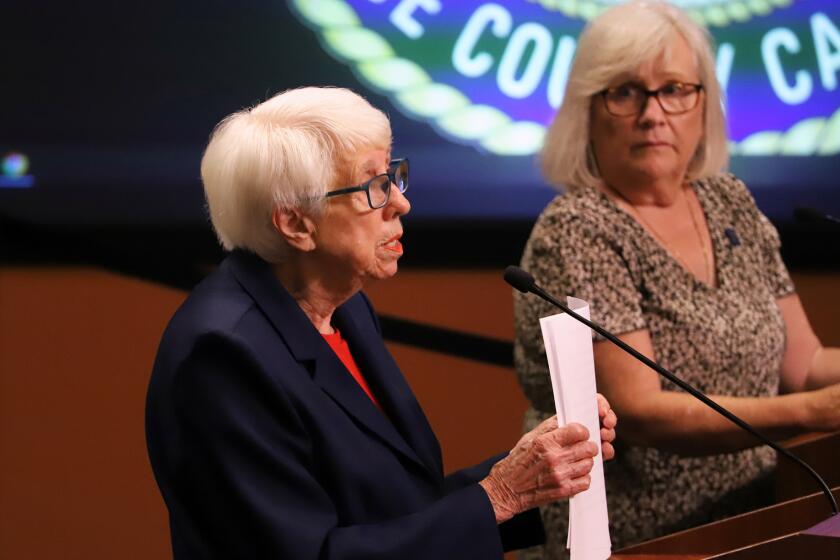Museum House opponents accuse OCMA of using lawsuit to try to squelch free speech
Opponents of the now-scuttled Museum House condominium project are accusing the Orange County Museum of Art of trying to stifle their free speech through its lawsuit challenging the validity of a petition that called for a referendum on the controversial high-rise proposal.
In a filing Friday in Orange County Superior Court, lawyers for local activist group Line in the Sand say the art museum filed what is known as a SLAPP suit when it alleged in January that Line in the Sand’s petition should be voided because it didn’t comply with state elections law. The suit argued the petition didn’t contain all necessary documents and that its font size was “virtually unreadable.”
SLAPP stands for “strategic lawsuit against public participation,” or one that is intended to burden opponents until they drop their opposition. California is one of 28 states that have anti-SLAPP laws.
Line in the Sand is seeking dismissal of OCMA’s case.
Developer Related California was set to redevelop the art museum’s site in Newport Center into a 25-story, 100-unit condo tower. But after Line in the Sand collected more than enough voter signatures to take the issue to a public vote, the Newport Beach City Council earlier this year revoked the approval it had granted the project last year.
OCMA had planned to sell its property to Related California and use the proceeds to help it move to a new location at the Segerstrom Center for the Arts in Costa Mesa.
According to the Line in the Sand filing, the museum’s complaint “is a classic ‘SLAPP suit’: a wealthy developer, through its proxy, has sued community and environmental advocates in a suit filled with meritless allegations which force the advocates to defend their exercise of First Amendment freedom to petition for a change in law, directing resources and time to the court system and away from other objectives.”
In a statement Monday, OCMA Director and Chief Executive Todd Smith said, “The litigation is to ensure that the referendum conformed to the law, which we believe it did not.”
Line in the Sand said its petition complied with formatting and attachment requirements while noting that the petition weighed roughly 10 pounds because the City Council had directed that the project’s environmental impact report be attached for potential signers to review.
The petition contained about 1,000 pages and would have had more had a larger font been used, Line in the Sand has said.
“The law is clear on this front: Because the right to petition in this manner is so carefully preserved by the courts, any technical deficiency that does not, as a practical matter, interfere with the ability of prospective signers to understand what they are being asked to sign will not invalidate a petition,” the group’s filing argues. “Even if there were any technical defects, the doctrine of substantial compliance would ensure that the petition survives all ... technical objections.”
Twitter: @Daily_PilotHD
All the latest on Orange County from Orange County.
Get our free TimesOC newsletter.
You may occasionally receive promotional content from the Daily Pilot.




